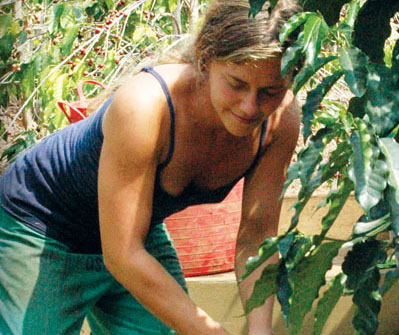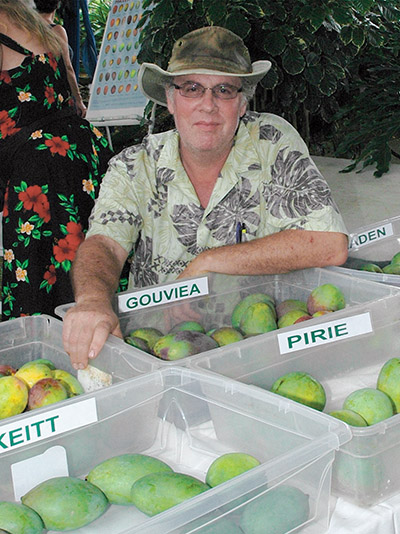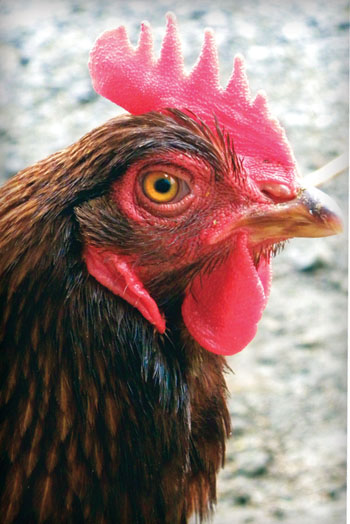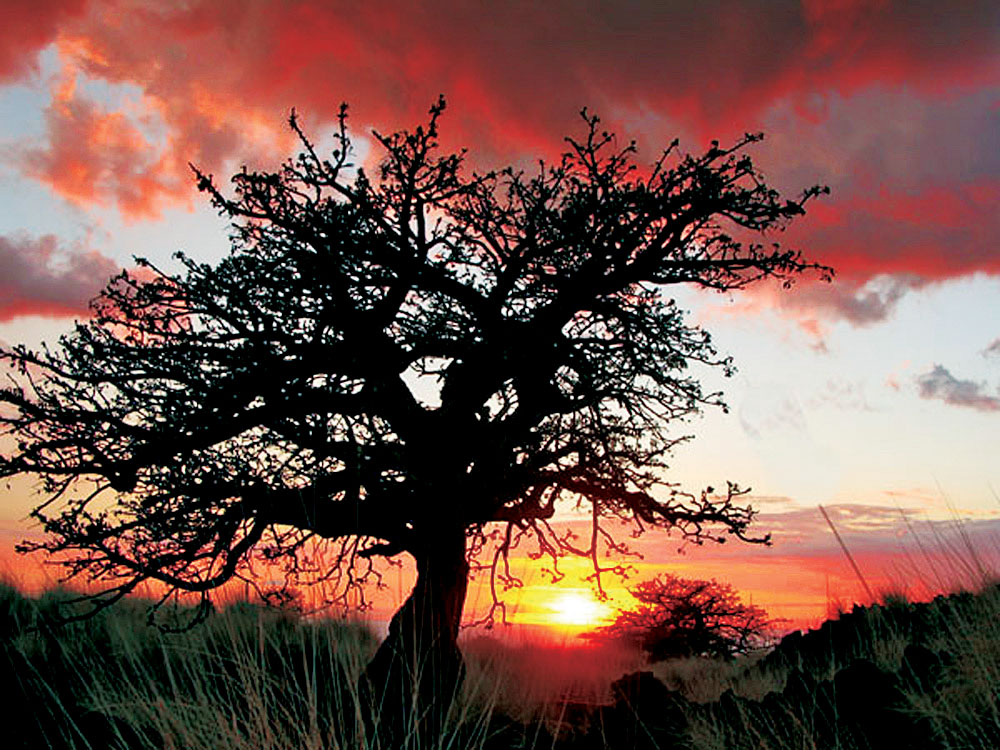
Flower Power: Outdoor Circles Make a Beautiful Difference

representative of vegetation found in different regions of the world.
By Ann C. Peterson
If you’ve noted that Hawaii’s beautiful scenery isn’t marred by a cacophony of huge billboards, you can thank The Outdoor Circle. “Clean, Green, and Beautiful” —that simple mission forged almost 100 years ago—has helped preserve and shape the landscape and natural beauty of our state.
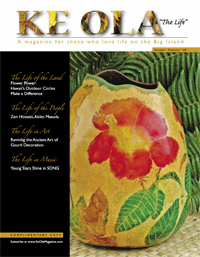
First formed by a “circle” of seven members of the Kilohana Art League in Honolulu in the early 1900s, it became The Outdoor Circle (TOC) in 1912 with a membership of 300 women. Feeling that the city’s board of supervisors was failing to create a town not simply to live in, but to love, they began their beautification mission.
At first they planted trees and flowers, established playgrounds and created attractive open spaces. Then they took on the daunting task of ridding the city of billboards that were becoming a blight as the dominance of commercial interests of emerging businesses were neglecting esthetics. With strong will and tenacity, these women led a boycott of businesses displaying the huge signs, raised enough money to purchase the last errant advertising company, and ultimately secured the passage of Act 195 outlawing billboards in 1927. The ban extended statewide in 1961.
Now a political force to be dealt with, TOC has planted hundreds of thousands of trees, helped prevent the adoption of hundreds of ill-conceived plans, and fostered a total of 12 branches throughout the state to carry out their mission. Included among them are three very active branches on Hawai`i Island: Kona Outdoor Circle, Waimea Outdoor Circle, and Waikoloa Village Outdoor Circle.
Kona Outdoor Circle
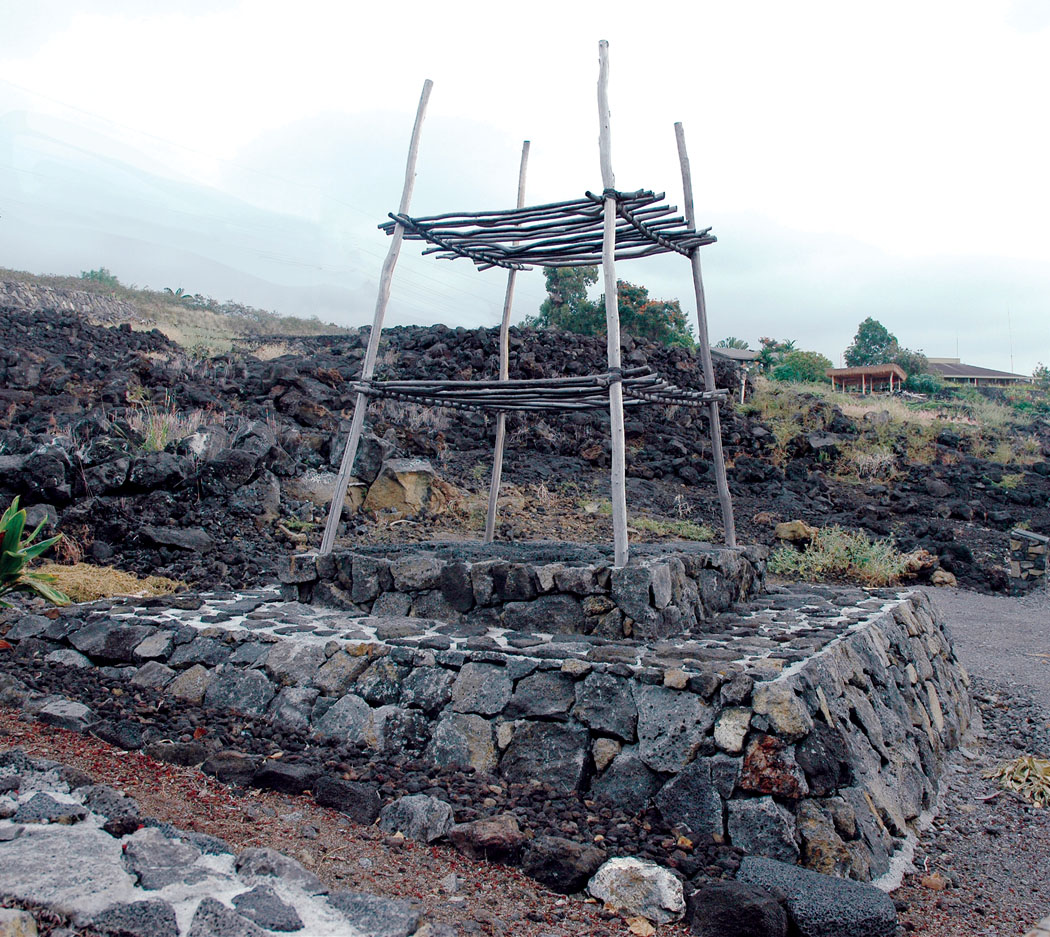
Kona Outdoor Circle (KOC) was the first neighbor island branch to form, in 1948. A new airport was planned, and a group of civic-minded women wanted to create a beautiful corridor into the Village; which at that time was along Palani Road. You can still see some of the bougainvillea donated by founding president, and native daughter of Hawai‘i, Sadie Seymour.
In the mid-1980s, a beautifully styled, open-air Educational Center was built on an important historical site at the northwest corner of Kuakini Highway and Lako Street with the help of community donations. Now a popular space for classes and private gatherings, it also houses the Memorial Library with the broadest collection of botanical and horticultural material on Hawai`i Island; including books, pamphlets, magazines, videos and colored slides – most donated and available for check out. It’s a valuable resource for learning how to grow virtually anything on the island.
On the north side of the Center is the Sadie Seymour Botanical Gardens, designed by the founder’s son, Scott Seymour, a noted landscape architect, to honor her memory and service. All the work was done by volunteer labor. The gardens cover 11 different terraces, representative of vegetation found in different regions of the world. “The upper terrace has indigenous Hawaiian plants —those that were here before the Polynesians came, many of which are now endangered,” said Seymour. Other terraces display species from the Pacific Islands—Australian, Indo-Malaysian, Indo-Asian, Asian, Mediterranean, African, West Indian, South American and Central American. The gardens are open to the public and are also available for special events, such as weddings and parties. The Educational Center and Gardens are administered by a separate organization, KOC Foundation, which also runs the Full Circle Thrift Shop, leaving KOC to focus on spreading the clean, green and beautiful mission throughout the district.
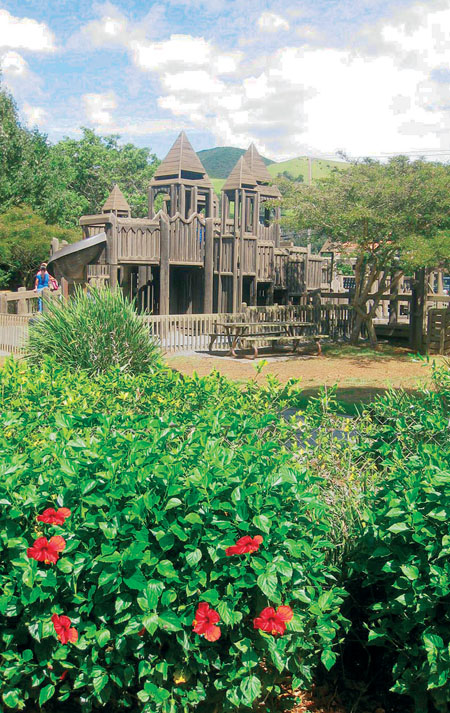
Just to the south is Kealakowa`a Heiau, built during the reign of High Chief Umi, who united the island in the 1600s and ruled from the Village of Kailua. Along with overseeing the revitalization of the site, curator Anna Hickcox, has launched a series of not-to-be-missed evening lectures on the history and customs of early Hawaiians.
One of Kona’s most popular, enduring, and beautiful annual fundraisers, Pua Plantasia—a spring plant sale—helps fund the group’s operating costs and annual college scholarship program.
Each year KOC offers many educational programs including a regular series of gardening classes, a Master Gardener Program—held jointly with the University of Hawai`i, and classes on a variety of plant-related crafts. They also present beautification awards in a variety of categories to honor the efforts of individuals and businesses that help keep Kona beautiful and green.
KOC current president, Marni Herkes, returning after having served as president in 1983, is leading the organization along a slightly different path this time around. “We’re responding to the current trends and community members’ interest in growing their own food,” said Herkes. “Growing edible landscapes in itself leads to being more clean and green – and healthy.” KOC offers classes on composting and building container gardens that, as Herkes points out, are helpful in “keeping the pigs out.” Their classes help folks know what trees, vegetables and other plants grow best in their particular neighborhood, and provide guidance on the trials and joys of gardening. Keep an eye on their newest project the “Green Lei” around the Kona Police Station in Kealakehe.
KOC education coordinator Diana Duff anticipated the emerging trend and began creating school gardens at Konawaena many years ago. Now, more than the plants are growing—with over 50 schools with garden programs fostered by the Kohala Center and with KOC’s continued support at Kona’s public schools. “Kids are helping create our greenway corridor,” says Herkes.
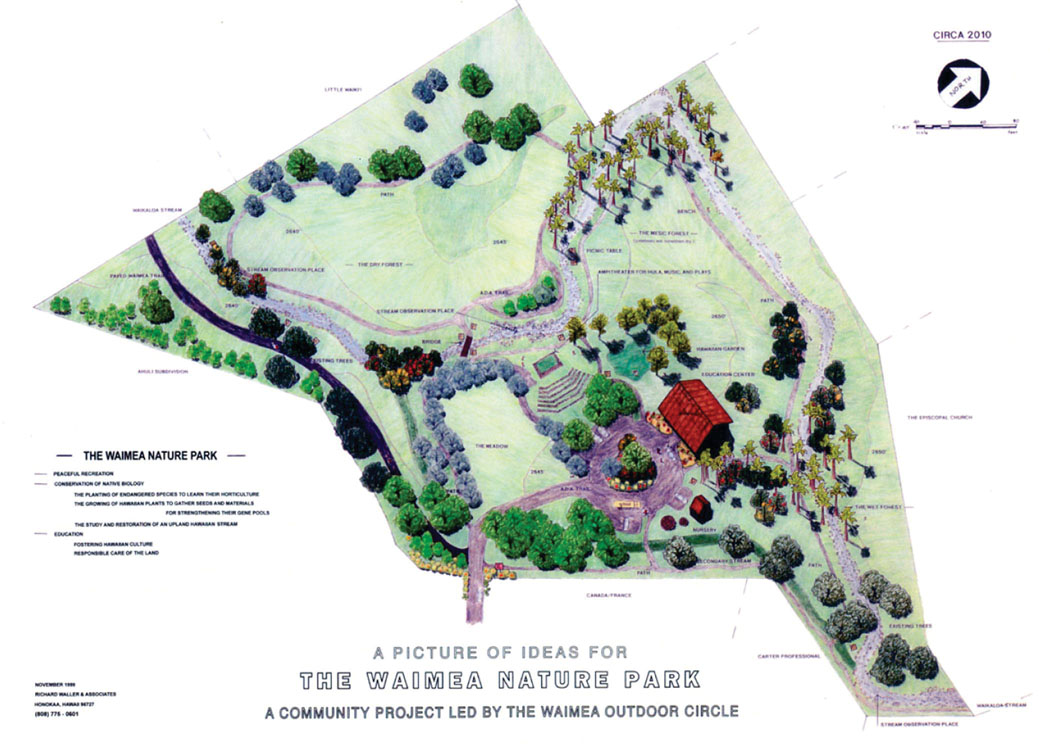 Waimea Outdoor Circle
Waimea Outdoor Circle
It was the loss of too many big trees in the late 1980s that fostered the creation of the Waimea Outdoor Circle. “So many individuals from Waimea were calling then-KOC-president Kathy Martin to see what they would do, that she said, ‘You guys have to get together’”, recalled founding president, Carol Hendricks. “We met at Merriman’s for lunch and became a garden circle under KOC’s wing,” she adds. “The group did a mailing to everyone in town and invited them to join—we immediately grew to 150, and KOC said, ‘you’re on your own.’” WOC incorporated in 1989.
Their first project was Waimea Park, where members planted trees and raised money for tree trimming. Several years later, a dump truck crashed into the park fence and the community came together to build Anuenue Playground at Waimea Park. This labor of love created a safer place for kids to play and a place of unlimited adventures in fortress-like structures. WOC also took on the job landscaping around the playground.
The dedicated group of WOC volunteers also designed and planted the entry to North Hawai`i Community Hospital, beautified the Waimea Elementary School grounds, and were successfully persistent when Mamalahoa Highway was widened through town, getting the county to put in a planted median and trees along Ohia street. Persistence seems to be a necessary attribute for Outdoor Circle folks, and no more so than in the development of Ulu La`au Waimea Nature Park, a 10-acre site southwest of the town center. It took seven years of advocacy just to address the various hurdles to secure a 55-year lease signed with DLNR and get the site designated as a public park.
The Nature Park has become a place where individuals and families come to picnic, learn about native plants and gather for “Music in the Park” events. WOC created a self-guided, interpretive booklet, available at the entrance, and there is often a volunteer around to answer questions. The park is open daylight hours, and is available for birthday parties, memorial services, weddings, and such. They just ask that you check with then to make sure it’s open and nothing else has been planned.
Waimea Outdoor Circle has a busy 2010 planned. Along with organizing clean-up days and sponsoring a number of different “green” classes, Anuenue Playground needs attention and they will be seeking volunteers/partner groups and donations for its renovation. They also have their annual plant sale on April 24, 2010, at Mile 51, the Anderson Arena. “This year we are expanding and putting an emphasis on the Hawaiian culture with indigenous plants as well as many traditional plants. There will be garden arts and crafts classes as well as our Plant Doctor, a silent auction and of course, music and food,” said WOC President Mary Mangarin-Kitchen. “One of our biggest goals for 2010 is establishing a new college scholarship fund,” said Kitchen with such resolve that you know it’s going to happen!
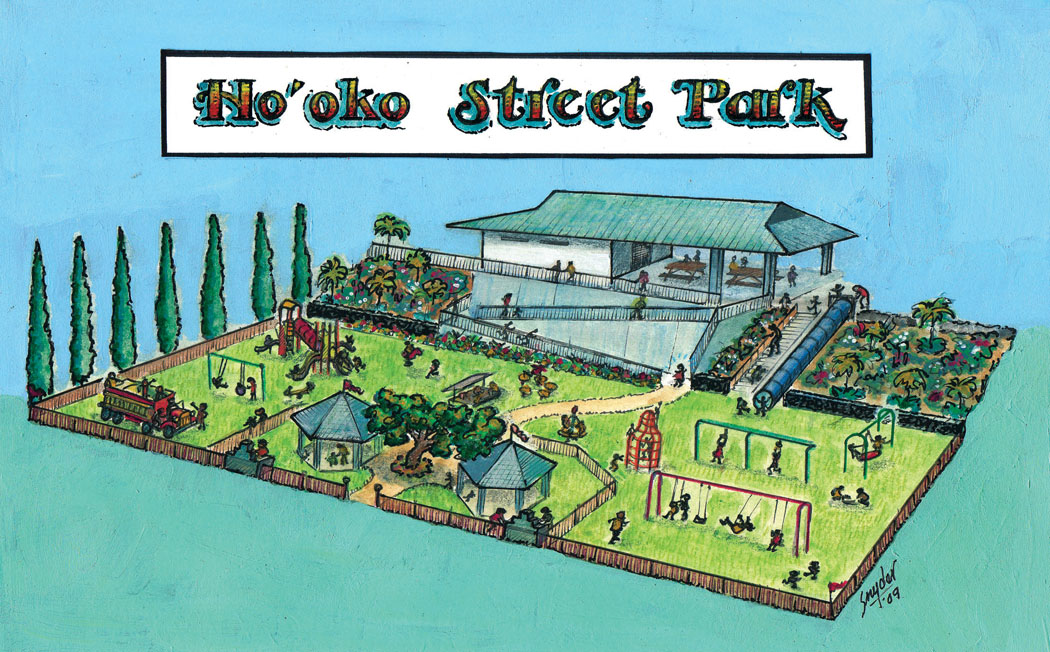 Waikoloa Village Outdoor Circle
Waikoloa Village Outdoor Circle
Like the other Outdoor Circles, the Waikoloa Village branch was formed by a small group of people, (in their case, 14) coming together to address a specific issue, and afterwards expanding their scope and their membership. The initial project in 1998 was the beautification of the median strip on Waikoloa Road. Their efforts took hundreds of volunteer hours to raise $70,000 for materials; to weed, dig, and plant the luscious variety of plant species; and after five years, weeds gently transformed into living, growing colors and textures that are a natural feast for the eyes.
In 2007, Waikoloa Village Outdoor Circle (WVOC) launched its Wiliwili Park Project. Wiliwili is an endemic tree whose exotic shape evokes the Hawaiian legend of three unkind sisters who were turned into a wiliwili tree, as seen in its fluttering leaves, falling leaves, and its gnarled trunk. (You can see a wiliwili from Queen Ka`ahumanu Highway at the entrance of Four Seasons Resort at Kapulehu). Wiliwili, which are thankfully not ‘endangered’, yet are considered ‘threatened’. They love this dry Waikoloa area. A small stand of them was found on land under development, and WVOC stepped in and successfully negotiated their relocation to safer and more visible places along Waikoloa’s roadways.
Another, larger stand of wiliwili was found on 275 acres within the village boundaries. WVOC sought and was granted stewardship and launched its Dry Forest Recovery Project. “It feels like an honor; these trees are hundreds of years old—and not self-replicating,” said Beverly Brand, WVOC president. “The site also has 13 uhiuhi trees, and there are only 30 left in the world,” she adds. Brand explains that 95 percent of the traditional plant species have been lost to invasive and out-of-control fountain grass that thrives even better after wildfires, and adds “goats are a big problem—every little thing that sprouts is eaten,” she said.

WVOC found the funding for a small stipend to hire Dave Faucette as Dry Forest Recovery Project manager, who along with volunteers has cleared much of the fountain grass from around the trees to save them from wildfires. They are awaiting word from DLNR on a 50/50 reimbursable forest stewardship program that will fund the installation of irrigation, the building of a fence, pest control, and outreach and education programs. This dry forest recovery effort has gained the interest and involvement of local schools, UH-Hilo, and Cornell University. WVOC is spearheading the construction of Keiki Playground at Ho’oko Street Park, near the elementary school, baseball diamond and soccer fields. Plans include two pavilions with landscaping, barbeques and play equipment, including a small area with apparatus suitable for children 2-5 years old. WVOC is soliciting grants, donations, and community volunteer assistance for this project.
In line with all the other branches, WVOC organizes educational classes, clean-up days, and fun events. They’ve compiled a list of plants that love Waikoloa’s enduring gusts of wind and arid conditions. For the coming year, the group is considering starting a community dog park.
As you can see, while each branch has unique programs, there are many similarities aside from their shared mission of clean, green, and beautiful. Foremost among them is the reliance on donations and the essential involvement of volunteers. Everyone is encouraged to get involved. It is very rewarding work, and you’ll meet lots of great folks. ❖
To learn more about these organizations:
Kona Outdoor Circle
808.329.7286
www.konaoutdoorcircle.org
koc@KonaOutdoorCircle.org
Waimea Outdoor Circle
808.443.4482
www.waimeaoutdoorcircle.org
marymkitchen@yahoo.com
Waikoloa Village Outdoor Circle
808. 883.3362
www.waikoloaoutdoorcircle.org
beverley.brand@gmail.com
